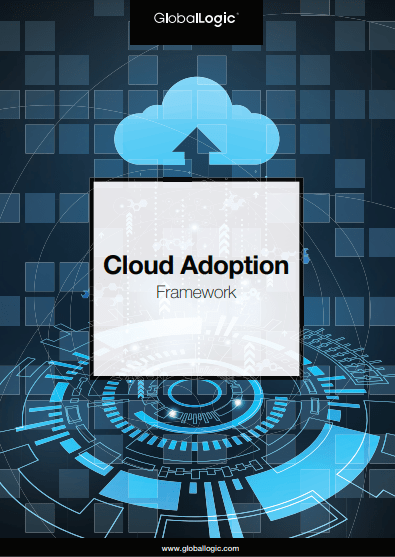-
-
-
-
URL copied!
Cloud computing offerings have disrupted the IT landscape, providing both opportunities for dramatic growth for the companies embracing them and, in cases of incorrect implementation, a plethora of pitfalls. GlobalLogic has developed a Cloud Adoption Framework based on top industry practices and infused with experience gleaned from implementing migrations firsthand, in order to help clients avoid these stumbling blocks. The purpose of this Cloud Adoption Framework (hereinafter referred to as CAF) is to:
- Provide an overview of stages for cloud migration
- Outline different modes of cloud migration
- Provide a list of actionable items for GlobalLogic Consultants and Clients at every stage
- Manage and assist with migration efforts based on inputs gathered
- Provide a list of templates and best practices
Given that each cloud journey is different, the authors have tried to keep this framework actionable yet lightweight and flexible enough to drive conversations and actions tailored to each client. It is free of the exhaustive templates and linked documents that make for a more rigid approach.
All cloud vendors and most major consultancy companies have cloud migration strategies and adoption frameworks. Each revolves around similar concepts, differing in nomenclature and depth of analysis for each phase; see the Cloud Economics model by Deloitte vs Microsoft’s Cloud Business Cases model, for example. Juniper, Amazon, and TechMahindra are among others using their own framework.
Each cloud adoption and migration effort is an iterative journey with an inevitable “crossing tax” to move between contexts. Business and IT realization that the cloud could accelerate certain business transformation objectives drives the last step, factual cloud adoption.
GlobalLogic’s CAF helps clients align strategies for the business, corporate culture and technical changes needed to achieve adoption and successful business outcomes.
Top Insights
Manchester City Scores Big with GlobalLogic
AI and MLBig Data & AnalyticsCloudDigital TransformationExperience DesignMobilitySecurityMediaTwitter users urged to trigger SARs against energy...
Big Data & AnalyticsDigital TransformationInnovationRetail After COVID-19: How Innovation is Powering the...
Digital TransformationInsightsConsumer and RetailTop Insights Categories

Let’s Work Together
Related Content
Leveraging SaMD Applications to Improve Patient Care and Reduce Costs
One of the most exciting developments in healthcare is the emergence of Software as a Medical Device (SaMD) as a more convenient and cost-effective means to deliver superior care to the tens of millions of people worldwide who suffer from various health conditions.
Learn More
View on payment industry modernisation: Drivers of change
The payment industry has been going through radical modernisation with multiple regulatory and infrastructure changes over the last five to ten years. The post-pandemic era has accelerated these efforts as consumer behaviour changed significantly during the COVID-19 outbreak. Consumers across the world expect real-time responses in all aspects of digital payment transactions and have adopted … Continue reading Developing a Cloud Adoption Framework →
Learn More
The Rise of The Invisible Bank
Banks will power experiences, but everyone will ignore them. Inspiration for this blog title comes from Jerry Neumann, the author of the blog Reaction Wheel, who wrote in 2015 that ‘software eats the world and everybody ignores it’. Neumann also observed that ‘information and communications technology becomes ubiquitous but invisible’ – in other words, … Continue reading Developing a Cloud Adoption Framework →
Learn More
GlobalLogic wins at the 2023 Analytics Institute Awards, Dublin
*This blog was updated on Friday 16th June. The team is excited to announce that GlobalLogic was named winners of the Emerging Technology Award at last night’s Analytics Institute Awards! This prestigious award recognises organisations that have successfully employed new technologies such as IoT, Edge Computing, Machine Learning, or RPA. Our submission showcased the successful application of … Continue reading Developing a Cloud Adoption Framework →
Learn More
MLOps Principles Part Two: Model Bias and Fairness
Welcome back to the second instalment of our two-part series – MLOps (Machine Learning Operations) Principles. If you missed part one, which focused on the importance of model monitoring, it can be found here. This blog explores the various forms that model bias can take, whilst delving into the challenges of detecting and mitigating bias, … Continue reading Developing a Cloud Adoption Framework →
Learn More
Share this page:
-
-
-
-
URL copied!
